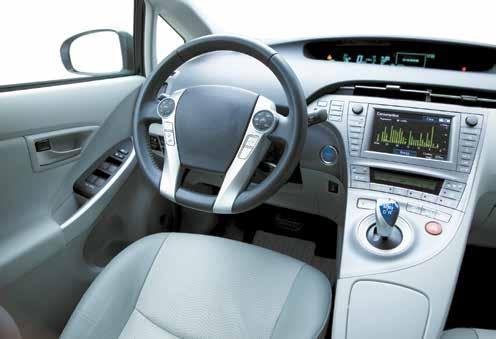
7 minute read
RAISING RESILIENT KIDS
How to Help Them Bounce Back
by Ronica O’Hara
In these turbulent times, children need to know how to confidently weather and deal with changes no matter what life hands them, say many psychologists. Studies show that when kids are resilient—having the ability to recover quickly from difficulties—they are less fearful and anxious, more confident and empathetic, and better able to handle cataclysmic events like 9/11.
Resilience can help them deal creatively with everything from cyberbullying to societal change. A Florida Atlantic University study of 1,204 children found that those that agreed with such statements as, “I can deal with whatever comes my way,” “I am not easily discouraged by failure,” and, “Having to cope with stress makes me stronger,” were less likely to be bullied in person or online and better able to cope when it occurred.
Resilience can be taught and learned at any stage in a child’s life, studies suggest. Some useful strategies include:
1Let them know they’re loved and supported. One stable, committed relationship with a supportive adult such as a parent, grandparent, aunt, teacher or coach is what a child needs to be resilient, according to research from
Harvard’s Center for the Developing
Child. This can be particularly important for children raised in less-than-ideal circumstances. “It is absolutely critical for

African-American children to learn resilience due to the current climate of hostility and racism, the inherent disadvantages in education and household income they are born into and hostile, crime-infested neighborhoods where they live,” says Damon Nailer, a Monroe, Louisiana, motivational speaker and author of Living, Loving, Leading. For children in all circumstances, he says, it’s important to “teach them that setbacks, failures, losses and adversity help you to learn, grow and become stronger.”
2Make resilience a household word. When San Diego child psychologist Bruce Thiessen’s daughter Kassidy was 4, he’d pretend to be the wolf inThe Three Little Pigs, howling, “I’ll huff and I’ll puff and I’ll blow your house down!”
She would reply, “Go ahead! I’ll rebuild it tougher and stronger!”
It was his way of embedding resilience in her, which he and his wife Roxie have reinforced with books, movies and songs. “Making the theme of resilience dominant in multiple activities will make an enduring, indelible impression on your child,” he says.
3Be a good example. “The most important thing to cultivate resilience, mindfulness and any other emotions really, is for parents to practice and model these things themselves,” says Christopher
Willard, Ph.D., a Harvard lecturer and author of Raising Resilience: The Wisdom and Science of Happy Families and Thriving Children. Adults need to bounce back from setbacks, whether it’s a social media mistake or a lost job, and find ways to reframe what happened in a positive light. To convey that attitude to a child, ask at dinner or bedtime, “What was the rose in your day? The thorn? What did you learn? What would you do differently next time?” The parent can model responses to these questions by sharing their own rose and thorn.
4Let them figure things out. “As tempting as it may be to step in every time you see your children struggling, allowing them to figure things out on their own builds resilience,” says Katie Lear, a Davidson, North Carolina, therapist specializing in childhood anxiety. “On the flip side, when a parent hovers or immediately steps in to solve a child’s problem, the child may interpret that behavior as, ‘I don’t trust you to be able to do this without help.’” Asking a child how they plan to solve a problem rather than questioning why the problem happened in the first place is a way to teach them creative problem-solving, advises Lynn Lyons, a Concord, New Hampshire, psychotherapist and co-author of Anxious Kids, Anxious Parents.
5Teach thankfulness. Feelings of gratitude bolster resilience, studies show. For example, college students that performed gratitude-inducing exercises reported feeling better able to handle academic challenges. “Teach your child to look for the gift within every problem,” advises C.J. Scarlet, author of Heroic Parenting: An Essential Guide to Raising Safe, Savvy, Confident Kids. “That’s often hard to do in the midst of challenges, but just knowing there will be a gift found at some point can help your child to ride out the storm with greater patience and confidence.”
Ronica O’Hara is a Denver-based health writer. Connect at OHaraRonica@gmail.com.
Solutions for Pain AND A PATH TOWARD HEALTH & WELLNESS

Dr. Robert Krasnick has been performing regenerative procedures for over 20 years, including Prolotherapy, Platelet Rich Plasma, and Stem Cell Therapy.

In addition, Krasnick Regenerative Medicine is offering IV (intravenous) nutrient infusions, including Myers’ Cocktail, Glutathione, and NAD+. Also offered is UBI (Ultraviolet Blood Irradiation) combined with Ozone therapy. These treatments are designed to support your immune system, decrease inflammation and promote health and healing. If you have chronic pain and are looking for natural alternatives or interested in promoting your health, call today for a free consultation.
210 Little Lake Dr Ste. 8, Ann Arbor (734) 585-5653 • KrasnickRegen.com
“Prolotherapy a wise choice. I am completely healed, and good as new!” – Self-Verified Patient, 01/20/20
Mask Eco-Disposal How to Dispose of Antiviral Wear
Discarded face masks and gloves What Not to Recycle littering streets, beaches, parks Recycling, the go-to strategy for and parking lots are a sad sight environmentally conscious citizens, is of the times, creating eyesores and more unfortunately not a good option. Even importantly, major contamination risks to in ordinary times, local recyclers won’t pick up and discard. With 88 percent of accept surgical masks and latex gloves the world’s population living in countries because they jam machinery. Some that have required or advised use of face dedicated providers box up used face coverings, disposable face masks number masks and gloves and send them to in the billions, especially the commonplace, TerraCycle.com, where they are sorted single-use polypropylene variety. Along manually and sustainably recycled. The with disposable gloves and sanitary wipes, cost for a small box is a hefty $148; they are clogging sewers and waterways MindBodyGreen.com suggests asking worldwide and showing up in fish bellies grocery stores or retailers to stock some and on ocean floors. for the community to use.

Thomas F Kabisch, DO, MDh – drkabisch.com –Awoon PLLC • Metro Ann Arbor • 734-971-5483 2350 E Stadium Blvd Suite 12
INTEGRATED GENERAL MEDICINE for the whole family.


46 years experience with guarantees –don’t waste money.
n Stem Cell Therapy n Complementary Cancer & Intravenous Therapy n Addiction Therapy n Age Management n ‘Simple Life’ Cancer
Prevention Program
n Homeopathy n Herbology n Nutriceuticals n Pharmaceuticals n Neuropsychology n Manual & Energetic
Medicines
Certified Health Education Courses See curriculum online, visit drkabisch.com now.
Instead of recycling, the World Health Organization recommends throwing singleuse masks, gloves and wipes into a covered trash can or bin immediately after use so they are handled as regular trash. Ideally, they should be put in a resealable plastic bag first in consideration of frontline sanitation workers that can become ill from handling virus-infected materials. No mask, glove or wipe should be flushed down a toilet.
Homemade Solutions
For masks, the eco-solution that harbors the lowest carbon dioxide footprint is one made of cloth that is machine-washed and dried after each use at a high temperature or washed by hand in a bleach solution (five tablespoons per gallon of water). University of Chicago researchers found certain fabrics filter out viral aerosol particles almost as effectively as the medical N-95 mask: a layer of a tightly woven cotton sheet combined with two layers of polyester-spandex chiffon, natural silk or flannel, or simply a cotton quilt with cottonpolyester batting. See cdc.gov for instructions for using sew and no-sew masks, and many DIY videos can be found on YouTube using T-shirts, socks and napkins.
Another good eco-strategy is to buy sustainable face masks made from recycled or organic materials (GoodOnYou.eco). In lieu of recycling to help the planet, a donation can be made to an ecoorganization that deals with plastic waste, such as PlasticPollutionCoalition.org or OceanConservancy.org.









